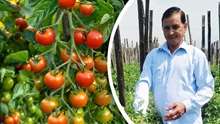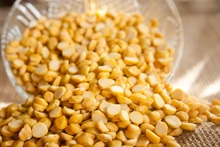
Shankar Rao of Telangana's Nalgonda district has been growing dates palm on two acres since 2013. He is the first person in the Nalgonda district to begin date cultivation. He purchased non-cultivable land for development purposes for a decade ago.
He began his studies after noticing palm trees growing in the region and discovered that the property, he purchased might be used to grow date palms.
He first considered it a risky business due to the lack of awareness and understanding among most farmers. He decided to take a chance since date farming is incredibly profitable. Rao interviewed numerous agricultural specialists and acquired knowledge before beginning his farm. He did soil studies and discovered that the site was suitable for date palm cultivation.
Rao’s instructions on growing date palms
Rao cultivated dates using the Barhee species of this plant. Because a date palm's development cycle is over 40 years, he experimented with planting 60 plants per acre on two acres.
Date palms are slow-growing trees. These plants are sturdy. More heat and less water are required for them. These plants require three years to produce their first harvest. After that, each plant may produce 20 to 30 kg of dates. In their lifespan, these plants may reach a height of 40 to 50 feet. In terms of appearance, these plants resemble regular palm trees. In general, one plant costs around 150 rupees, but they will not generate any crop until they are 6 or 7 years old.
He cultivated the date palms using cultured tissue plants because of this. These plants are quite expensive, costing about 3,100 rupees per plant. So, he spent around 1,86,000 rupees each acre to purchase the plants, totaling 3,72,000 rupees for two acres. And it cost him about 30,000 rupees to grow these two acres individually. This comprises the price of labour and machinery. Despite their high initial cost, these tissue-grown plants assisted Rao in delivering large and rapid yields.
The first harvest took him only three years instead of seven. When planting the crops, make sure that the distance between each plant is 27 feet. His spacing is required since it demands wind, which can help avoid fruit bunch damage. To cultivate these trees, you'll need to find soil with a hydrogen content of 8-10. He has selected a worker to look after the farm, and he is also under his direct control.
They've been using different fertilisers in little amounts for each plant since planting to get great harvests. They use single super phosphate combined with milk as a fertiliser, and they should feed once a year.
DAP, 250 grammes per plant, should be given to the plants once a year. He also uses a drip irrigation system to irrigate these trees, which has helped him save money and has shown to be efficient.
He also uses a special powder that he imported from Gujarat. While pollinating, they sprinkle this powder on the flowers to ensure greater pollination. Covering the fruit bunches with red netting will also keep the birds away from the fruit. Birds hate the color red, thus these fruits are secure from them when they are covered in it.
Rao sells his fruits to a shopkeeper for Rs. 80 per kilograms. Each tree on this farm has the ability to yield 10 to 15 fruit bunches, each weighing around 6 to 7 kilograms and his farm has 120 date palms, which means he makes roughly Rs. 7,48,800 every batch during harvest, which is a substantial sum. His two acres of property cost over Rs. 40,000 to manage, which is a fraction in comparison to his salary.
So, his net profit every batch is approximately Rs. 6 lakhs, which is a good income for any farmer. He advises younger farmers to experiment on their farms with various crops after performing some preliminary study. He also urged farmers with property in high-temperature areas to plant such trees in order to increase their income.
Despite everyone telling him he was making the wrong decision, he took a chance, and now he is the happy owner of a dates farm that can generate large income from producing dates.











